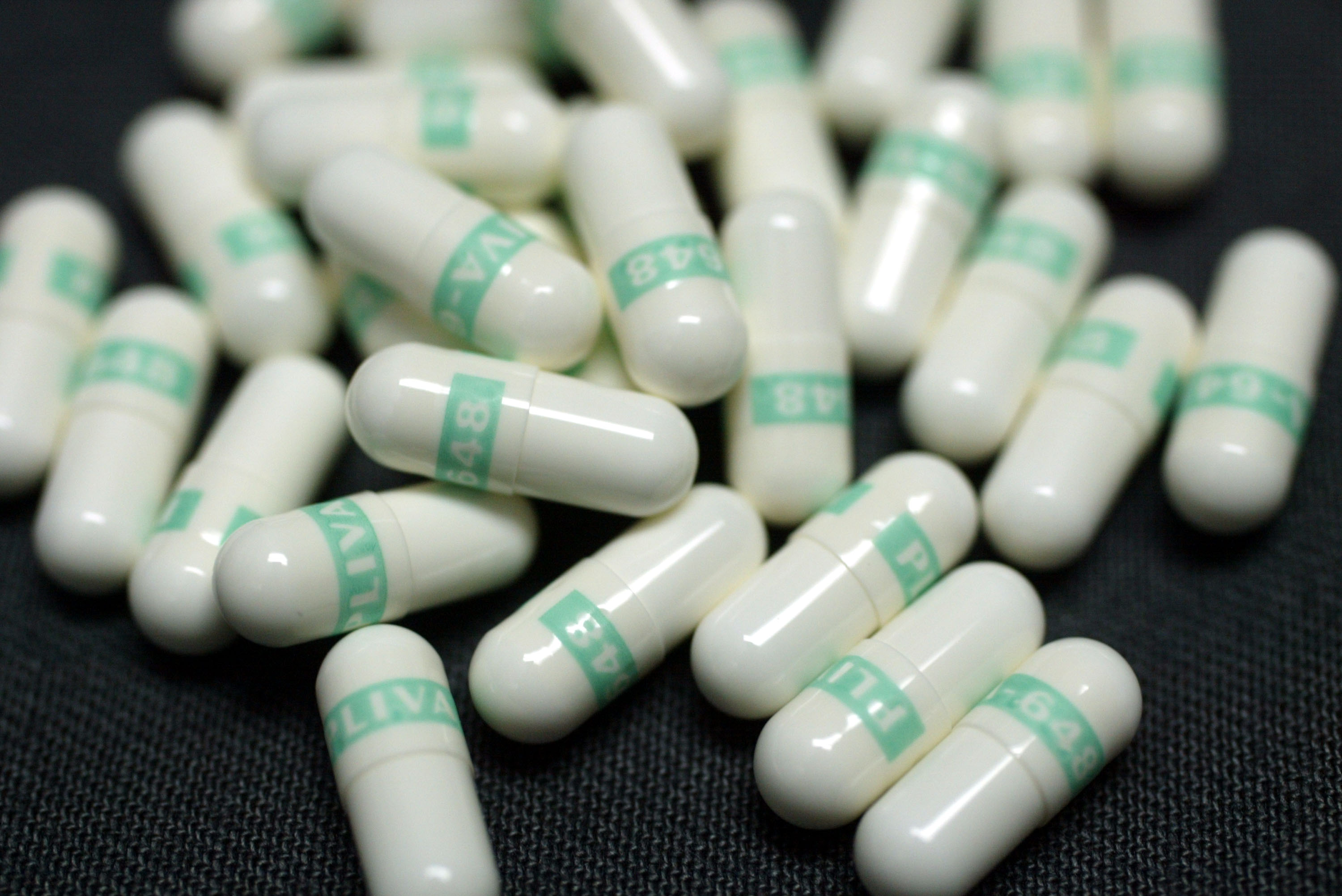More than 1 million reports of drug side effects were filed with the U.S. Food and Drug Administration in 2015, a fivefold increase since 2004, according to an analysis by the Milwaukee Journal Sentinel and MedPage Today.
Numbers aren’t final for 2016, but are expected to match that all-time high.
Drugs used to treat diseases such as rheumatoid arthritis, psoriasis, multiple sclerosis, a type of cancer and diabetes are among those with the greatest number of reports. Many of the drugs are for conditions that occur in 1% or less of the population, but several have seen increasing use in recent years.
For years, the FDA’s adverse events system has been derided because of its largely voluntary nature — only drug companies, not doctors or patients, are required to report problems. As a result, the system likely only was capturing a small percentage of cases.
In recent years, the number of reports filed has been multiplying, prompting more independent researchers and drug companies to use the data as a way to detect safety problems, the Journal Sentinel and MedPage Today found.
But experts say the information still is largely untapped and — if used more — could become an important alarm that warns of dangerous drugs after they hit the market.
The surge in reports could indicate a growing number of harmed patients or more vigilant reporting of adverse events, a goal of the FDA. Experts say both likely play a role.
Twelve years ago, there were 206,000 reports of side effects from medications filed with the FDA — complaints as frivolous as flatulence, as serious as death.
By 2015, the most recent full year of data, the number had grown to 1.2 million.
The FDA has long discouraged use of the system for research purposes. When it distributes the database, it attaches warnings that say the reports aren’t evidence drugs caused the problems listed, that the data can’t be used to estimate risk and that it should not be used to compare drugs.
In 2005, the Government Accountability Office estimated the system only captured 1% to 10% of all adverse reactions. Despite the explosion in reports, that remains the most recent estimate of how many cases are caught by the system.
Strength in numbers
The increased volume of reports has researchers, insurance companies and even some pharmaceutical groups re-imagining how the data can be used.
“Sheer numbers have some scientific weight,” said Thomas Moore, senior scientist at the Institute for Safe Medication Practices, a nonprofit watchdog group focused on drug safety. “If 500 people report a problem, it is unlikely that they are all wrong.”
For all its warnings about the limitations of the system, the FDA itself has relied on the reports to guide its actions. Case in point: a patch used to treat migraine headaches.
In September 2015, the Zecuity patch was allowed on the market after years of give-and-take with FDA officials. The patch, which looks like a large armband, released a drug through the skin to fight migraines. An early version failed to get approval after the FDA raised concerns that it could “cause severe burns and permanent skin lesions.”
The patch was redesigned and tested on 58 people, none of whom reported problems. The FDA could have required more clinical testing, but instead chose to approve the redesigned patch and rely on “postmarket surveillance.” In other words, the safety of the product would be linked to reports of side effects.
The FDA ordered Teva, the manufacturer, to report adverse events within 15 days of receiving any complaint.
Nine months later there were hundreds of reports of blisters, burns, scars and pain. On June 2 of last year, the agency said it was “investigating the risk of serious burns and permanent scarring.” A week later, Teva voluntarily pulled the product.
The company said it worked with the FDA to pinpoint a problem but noted because the root cause was not identified, the product remains off the market.
However, others say the voluntary and cumbersome nature of the system makes the value of the information limited.
“As a physician, I have tried to use it and it is very, very clumsy,” said Joseph Ross, an associate professor of medicine at Yale University School of Medicine.
He said the system only provides a numerator — the number of adverse event reports for a drug — without establishing the denominator, the number of people using that drug.
In doing its own analysis, the Journal Sentinel and MedPage Today found that among the 10 drugs that accounted for the most reports, seven carry “black box” warnings, the FDA’s most stringent alert for serious or potentially life-threatening side effects.
The 10 drugs account for one out of every five reports filed since 2013. Yet, none is on the top-10 list of most prescribed drugs as determined by IMS Health, a drug market research firm.
“We are concerned,” said Michael Carome, deputy director of Public Citizen’s Health Research Group. “It reflects that the FDA has allowed drugs to come to market without adequately ensuring safety.”
FDA response
The FDA doesn’t share that opinion.
“It's not always necessary to wait and go through a traditional development program before making a drug available to patients,” said Lyndsay Meyer, an FDA spokeswoman.
She said speeding up the drug approval and development process goes hand-in-hand with strengthening the adverse event reporting system. The agency has taken many steps to increase the quality and number of reports, she said.
Couple those actions with increasing consumer participation in the system, she said, and it’s hardly a surprise reports would rise so dramatically.
“In fact, we encourage health care providers and the public to report suspected adverse drug events,” she wrote in a statement.
In 2015, the FDA started requiring companies to report events electronically, instead of on paper. That led to an increase in less-serious events in the database and 300,000 additional reports — the largest single-year jump in the program’s nearly 20-year history.
Patients, too, have increasingly reported problems.
In 2004, just 45,000 reports — some 20% of all those filed — originated with consumers. In 2013, for the first time, more reports originated with consumers than health professionals. By 2015, consumers accounted for 55% of all reports.
A ‘virtuous circle’
Brian Overstreet runs Advera Health, which analyzes the database for insurance companies, pharmaceutical companies and other groups.
He said consumers are increasingly likely to report cases as part of a “virtuous circle.”
Because the system has more reports, it gets more attention from media and the public. Because it gets more attention, consumers are more likely to make reports, which in turn makes the system more complete.
He also cited high-profile drug cases, like those involving Vioxx and Avandia, as encouraging people to make reports.
Vioxx, a pain drug, was removed from the market in 2004 because of concerns that it could cause heart attacks and strokes. Avandia, a diabetes drug, initially also was linked to increased risk of heart attacks, but in 2013, upon further study, the FDA found no elevated heart attack risk and removed prescribing restrictions it had imposed.
Still, the drug has other potential risks — it has the FDA’s most serious warning because it and other drugs in its class can worsen congestive heart failure.
Since 2013, it has been linked to more than 78,000 adverse event reports, including more than 6,500 deaths, according to the Journal Sentinel/MedPage Today analysis.
A spokesman for manufacturer GlaxoSmithKline said the reports include a large batch of cases that came from lawsuits, some involving events dating back to 1999.
Such litigation can give an inaccurate picture of how many people truly are harmed by a drug, spokesman Juan Carlos Molina said in an email. He said many of the reports involving Avandia were missing information and some who filed claims could not show that they had ever used the drug.
Most-reported drugs
Drugs that treat autoimmune disorders such as psoriasis, rheumatoid arthritis and Crohn’s disease also have generated a large volume of reports.
Because the drugs suppress the immune system, they can increase the risk of serious or even deadly infections, such as tuberculosis and invasive fungal infections, and lymphomas (cancers of the immune system).
Humira, which came on the market in 2002 and now is approved to treat 10 such conditions, was linked to more than 209,000 reports since 2013, including more than 4,200 deaths.
At the same time, U.S. prescriptions for Humira have taken off in recent years, jumping from 1.5 million in 2011 to 2.4 million in 2015, according to data from IMS Health.
Alissa Bolton, a spokeswoman for AbbVie, the manufacturer, said the company does rigorous safety analyses of its products and provides detailed safety reviews to the FDA and other regulators around the world.
She said Humira “has a well-established safety profile and is a trusted treatment that is supported by more than 14 years of physician and patient experience.”
Also high on the list of drugs with a large number of adverse event reports is the cancer drug Revlimid, which is used to treat multiple myeloma and mantle cell lymphoma.
Since 2013, it has been linked to nearly 69,000 reports, including more than 10,000 deaths.
John Freeman, head of drug safety for Celgene, the maker of Revlimid, said the reports include drug side effects, but also might capture worsening cancer or some other medical condition.
The total number of adverse event reports for a drug is not evidence of a new side effect, he added.
In the case of Revlimid, those reports may be skewed by FDA restrictions on use of the drug. Revlimid is a derivative of one of the most infamous drugs in the history of medicine: thalidomide.
The drug was used primarily in Europe during the 1950s and 1960s to treat morning sickness in pregnant women until it was found to cause severe birth defects to the arms and legs of thousands of babies.
It was not until 2005 that Revlimid was approved as a cancer drug in the U.S., but with restrictions designed to make sure it is not used by women who could become pregnant.
As a result, there is close interaction between the company and patients, which means the company is more likely to be aware of any potential problems. That, in turn, may lead to a higher number of reports to the FDA because companies are obligated to report any problems.
In addition to birth defects, Revlimid also carries a black-box warning for its potential to cause abnormally low white blood cell levels and another because it poses a significant risk of blood clots, heart attacks and strokes.
In some cases, companies have started embracing the once-derided FDA database.
Denmark-based Lundbeck, which specializes in neurological drugs, used the data to find out what kind of side effects were most commonly reported within a certain class of drugs, said Ashleigh Duchene, a spokeswoman for the company.
If a certain kind of side effect keeps cropping up, she said, the company’s researchers pay special attention to preventing that issue. The volume of reports makes that kind of research more meaningful.
"It's really that R&D focus for us, seeing what's out there and where we can better focus our developments in the future,” she said.
John Fauber is a reporter for the Milwaukee Journal Sentinel. Matthew Wynn is a reporter for MedPage Today.
This story was reported as a joint project of the Journal Sentinel and MedPage Today, which provides a clinical perspective for physicians on breaking medical news at medpagetoday.com.


